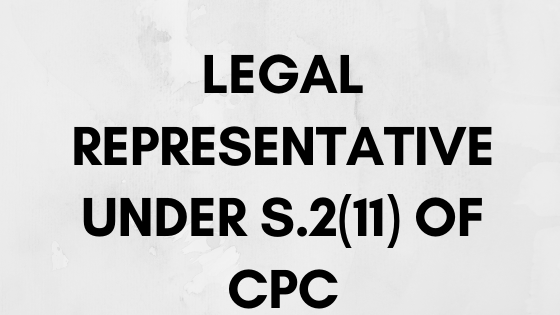Introduction The court appoints a commissioner in a civil suit to do some work on his official duty. However, it is not compulsory for every case; the court can not routinely pass such an order. The Civil Procedure Code 1908, Section 75, and Order 26 refer to the appointment of a commissioner in a civil […]
Category: CPC
Know The Difference Between Res Judicata And Estoppel With Case Laws
(1) Introduction: The meaning of res judicata and estoppel look like the same, but there are some difference between them. Whether a party has a right to file litigation again which subject matter is already verdict? No one can file civil litigation based on the same subject matter between the same party which is already […]
What are the main grounds for rejection of plaint under CPC? Ι Order 7 Rule 11 of CPC
Introduction: The provisions of Order VII of the Civil Procedure Code,1908, specify some grounds for rejecting paint. That provision enables the Court to dismiss the lawsuit at any stage. There are many grounds for rejecting the Plaint. In this article, we discuss all the reasons for dismissing the suit. The civil procedure code has a […]
Is registration of a Partnership Firm Compulsory in India?
(1) Introduction: Many business concepts are available worldwide, for example, private limited company, public limited company, Limited liability partnership (LLP.), proprietor, Partnership, etc. Among them, managing a business through the Partnership is an easy, simple, and popular way. Generally, the Partnership refers to two or more people who can decide their rights and share the […]
Difference between Appeal and Revision
(1) Introduction:- Equal justice is a constitutional right of every person. Sometimes a party has to be involved in the litigation, whether directly or indirectly. In that situation, they often use the legal words appeal and revision. But sometimes, a party does not know the difference between appeal and revision in legal terms. This article […]
What is amendment of pleadings under order 6 rule 17 of CPC?
What is a pleading in law? Pleadings are the foundations of the lawsuit. Any case or trial lies inside the foundations of pleadings. This means pleadings are documents filed by the parties in the suit, and on the basis of that element of the lawsuit, parties in the litigation can make their perfect legal stand. […]
What is Cause of action in Civil Suit?,[Know meaning, definition and Jurisdiction of Cause of action in CPC.]
What is the cause of action? The cause of action is a bundle of facts that allows a person to establish his or her legal rights against another. If a person is violating his constitutional rights because of certain circumstances, he can defend his rights instantly. He must show how his lawful right has been […]
Legal representative IΙ Section 2(11) ΙI CPC
Definition of a legal representative under S. 2 (11) of CPC “Legal representative,” as defined in the Civil Procedures Code, under s.2(11), means a person who in law represents the estate of a deceased person and includes any person who intermeddles with the estate of the deceased and where the party sues or is prosecuted […]
Can defendant cross-examine of plaintiff’s witness without filing written statement in suit?
Question: Can the defendant cross-examine the plaintiff’s witness without filing a written statement in a suit? The answer to this question is yes. The defendant can cross-examine the plaintiff and his witness without filing a written statement in the suit. According to Basalingappa Chinnappa Goudar vs. Shantavva And Ors ILR 2002 KAR 260, the Karnataka […]
Proper and Necessary party under CPC
Introduction: In a civil suit, having opposite parties is the most crucial requirement of the lawsuit. However, every party of the suit doesn’t need to be adjudicated. In this way, there is some distinction between the necessary and proper party in a civil suit. One of the basic requirements of any civil litigation is proper […]










